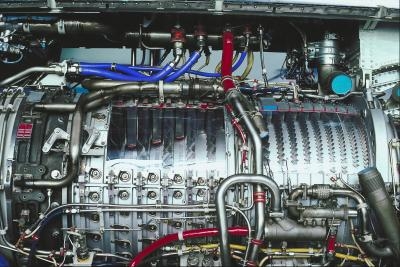
Automotive engines use bearings to allow internal engine parts to spin without coming into contact, as the bearings are designed to allow a film of oil to sit between the moving parts, thus prohibiting metal-on-metal contact. When a rod bearing fails, it usually causes engine damage, the severity of which greatly depends on the engine and the failure event in question. You cannot simply replace bearings when there is a bearing failure, you need to have the rotating assembly examined and possibly machined by a professional shop to correct damage.
Examine the rotating assembly to ascertain the amount of damage. When you look at an engine's rotating assembly, the bearings sit between the connecting rods and the crankshaft. The crankshaft has rod journals on which the connecting rod rotates, and the connecting rod itself will have an upper and lower bearing.
Remove the crankshaft and connecting rods, which on most engines requires the engine to be removed from the vehicle. When a rod bearing fails, that usually means rod-to-crankshaft contact, which damages the crankshaft and possibly the rod. This means that the rod journals on the crankshaft will need to be reground to repair the damage, which then means oversized rod bearings will need to be used.
Take the rotating assembly to a automotive engine shop for analysis. The shop will be able to tell you whether the rod can be re-ground, or whether it needs to be replaced. The damage will depend upon the cause of failure, which can either be heat, wear or oil starvation. You will need to take the entire rotating assembly including all the rods, not just the failed one, as all rods will need to be re-ground to match the damaged one, if repair is possible. Oversized rod bearings will then be installed into the rods by the shop.